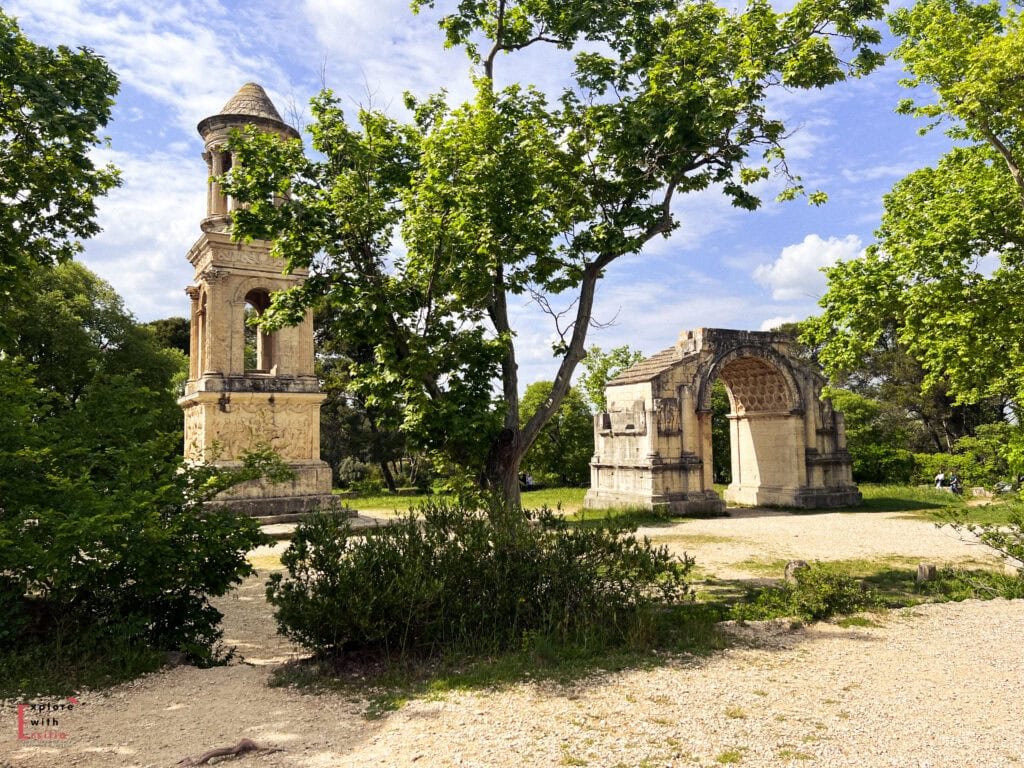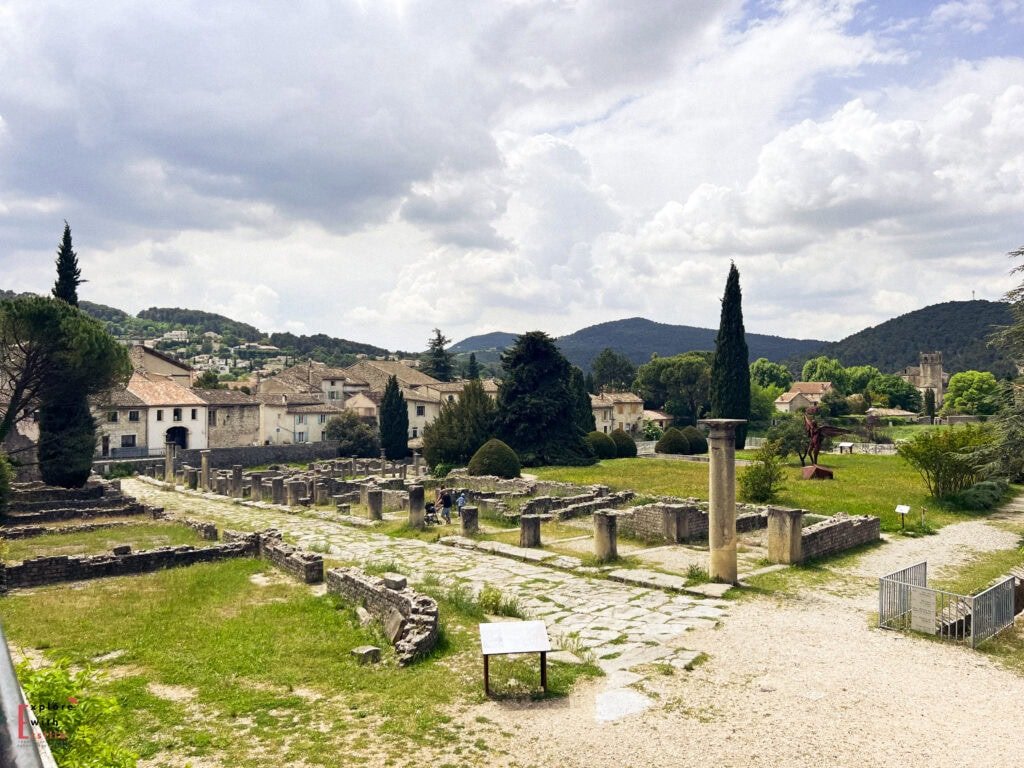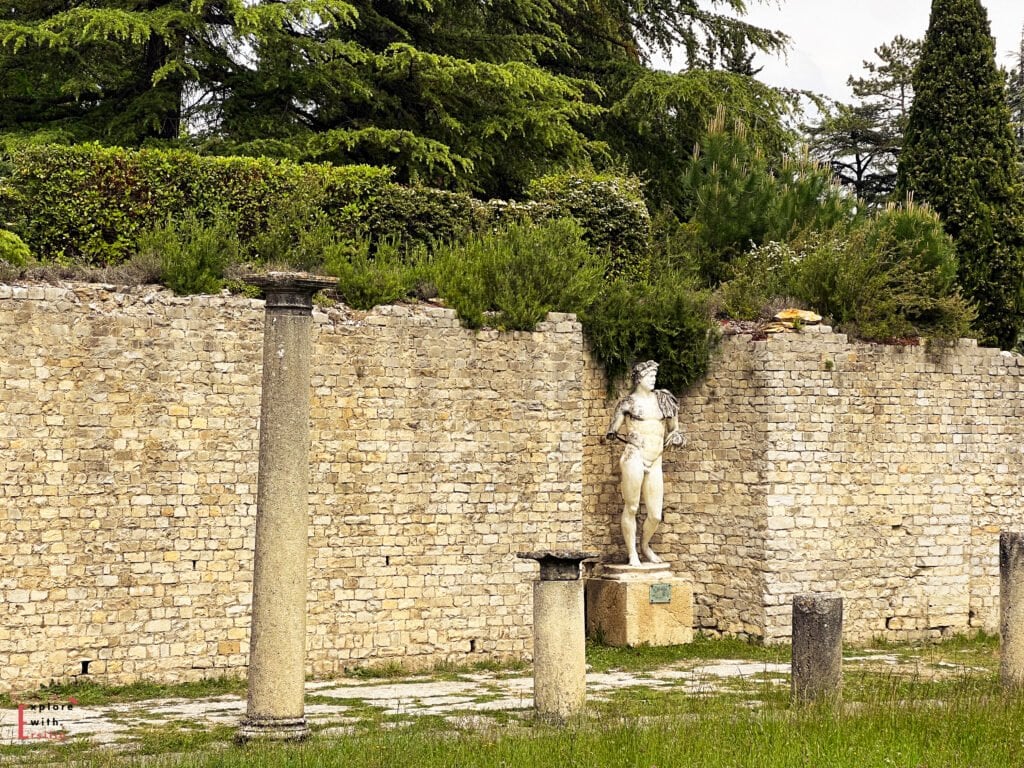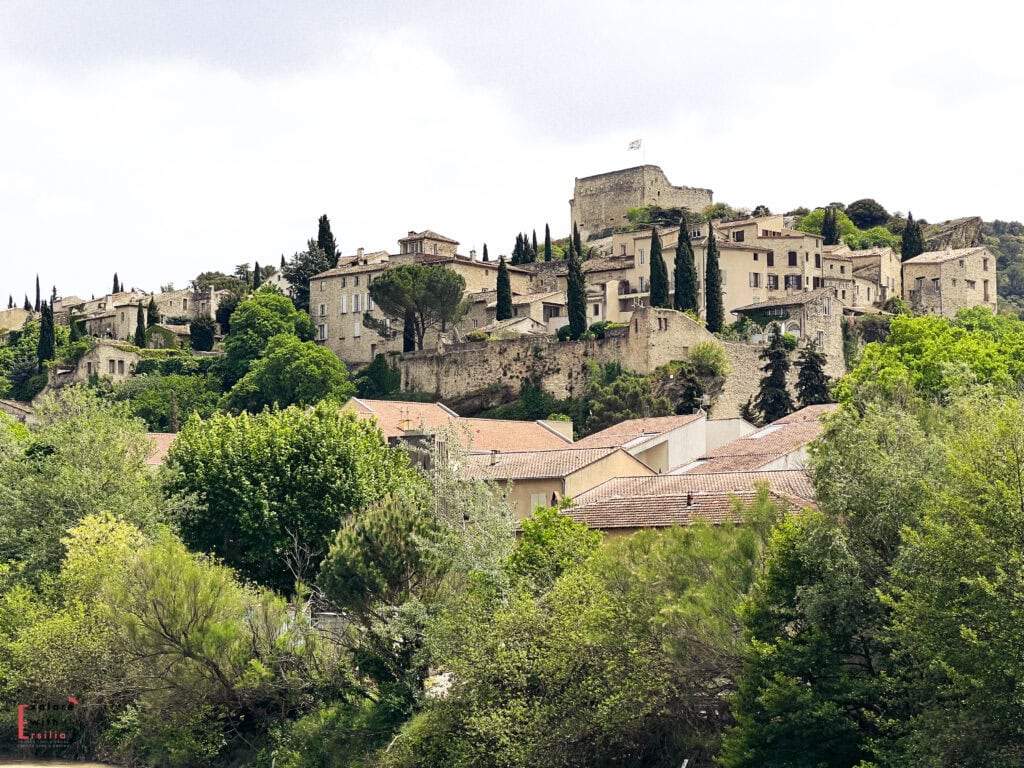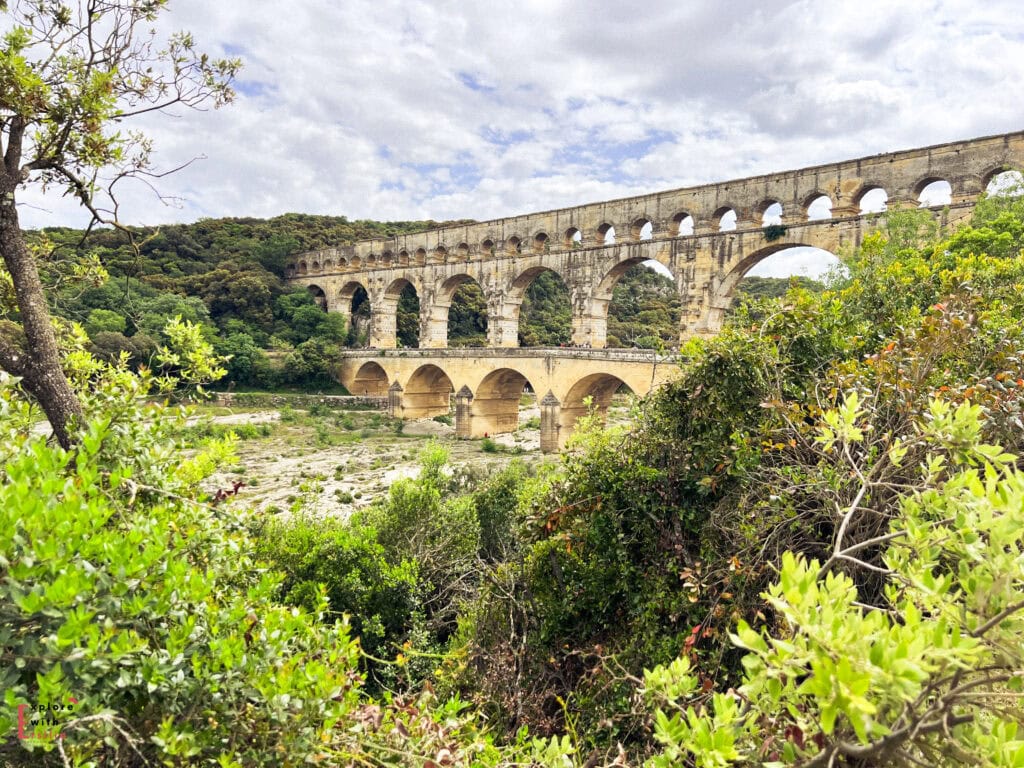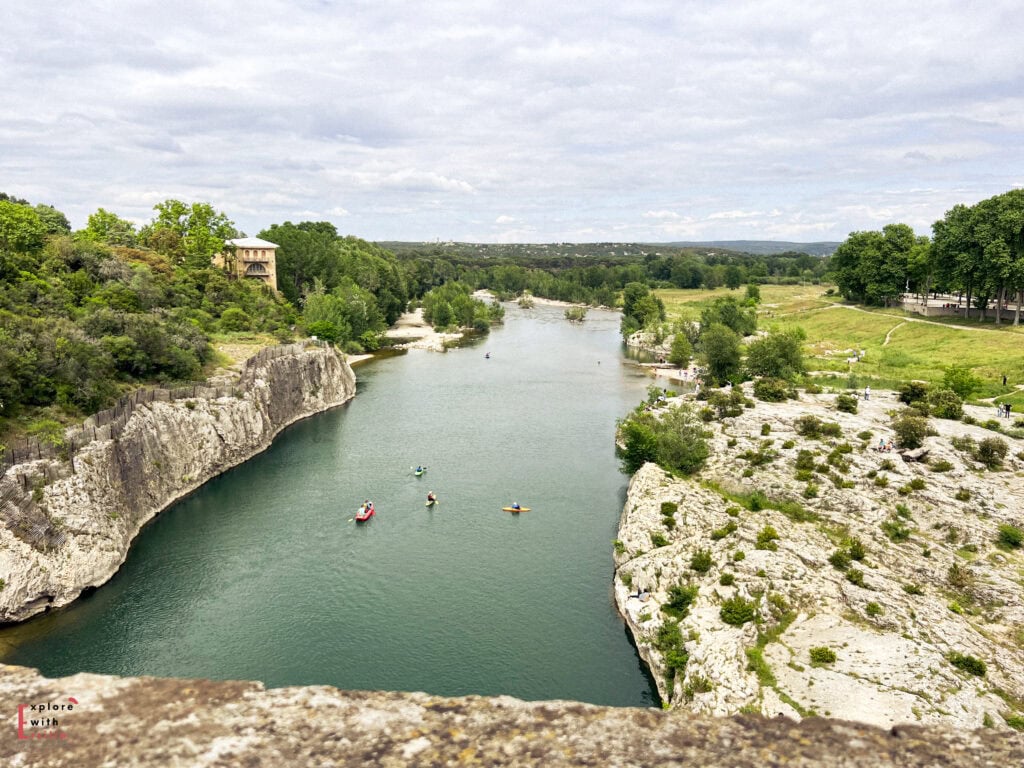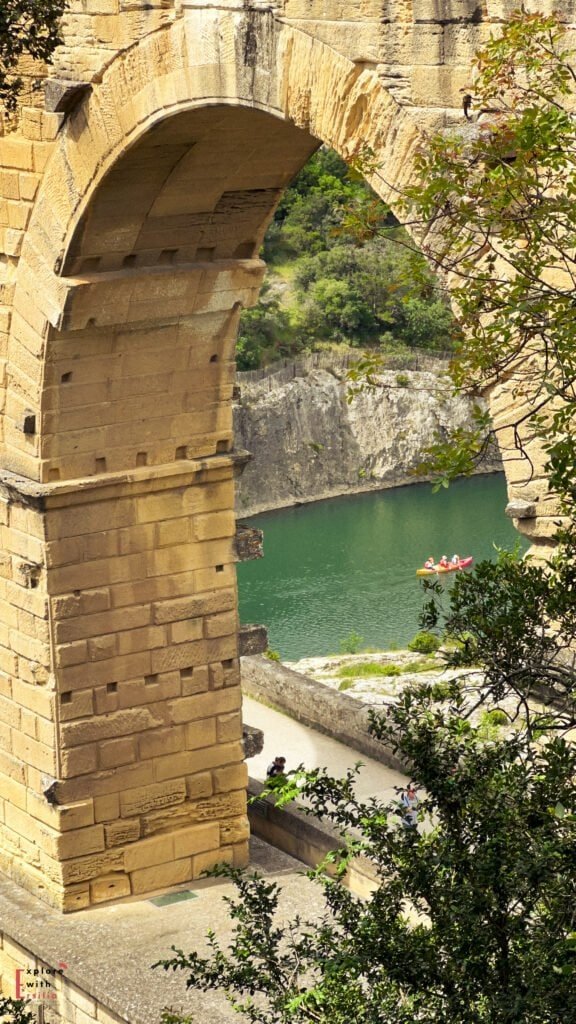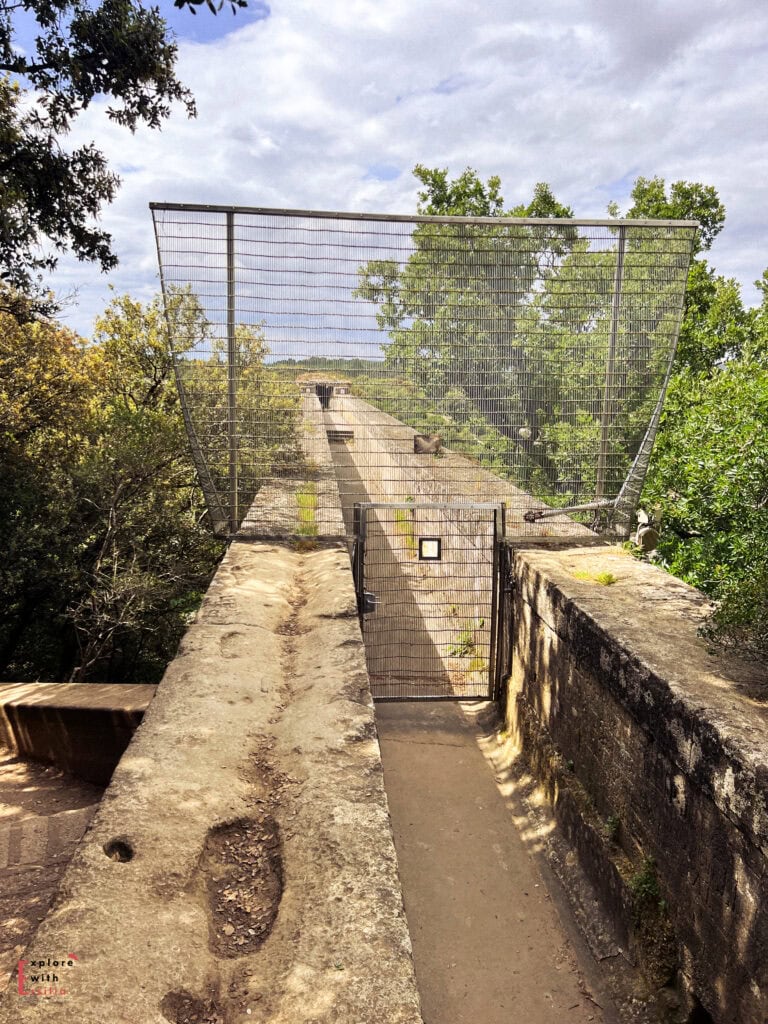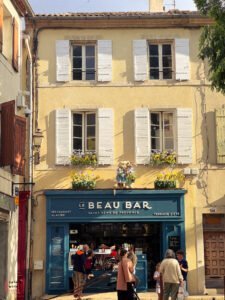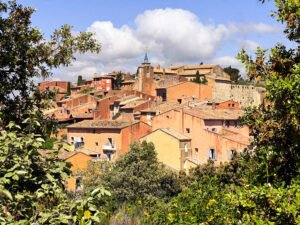Explore with Ersilia contains affiliate links and is a member of the Amazon Services LLC Associates Program. If you make a purchase using one of these links, I may receive compensation at no extra cost to you. affiliate links are how we keep this content free. A huge thanks if you use these as it helps a lot! See the Full Policy for more information.
Did you know that Provence it’s packed with Roman ruins that are better preserved than half the stuff in Rome itself ?
I stumbled onto this completely by accident during what was supposed to be a “relaxing lavender fields and villages” trip.
Instead, I found myself face-to-face with 2,000-year-old theaters, ancient streets where Romans actually walked, sacred springs that still bubble up today—and oh, a giant aqueduct that still defies gravity: the Pont du Gard.
I actually managed to visit two of these roman sites in one day (ambitious? Yes. Worth it? Absolutely).
Though honestly, squeezing in three or four might be pushing it. But here’s what I learned: Glanum in Saint-Rémy-de-Provence, the jaw-dropping Pont du Gard, the incredible Théâtre Antique d’Orange, and the massive archaeological site at Vaison-la-Romaine aren’t just old stones. They’re time machines.
And if you’re planning to stay overnight? Saint-Rémy is your best bet – trust me on this one. Also, if you’d have to choose only one tour, what’s better than wine and history together? I’d go with this one !
Short on time but want to see more of Provence’s highlights in just one day? Don’t miss my “5 Villages in One Day” itinerary—it’s packed with charm, scenery, and smart shortcuts!
Morning: Glanum – Where Sacred Springs Meet Roman Engineering
Saint-Rémy-de-Provence
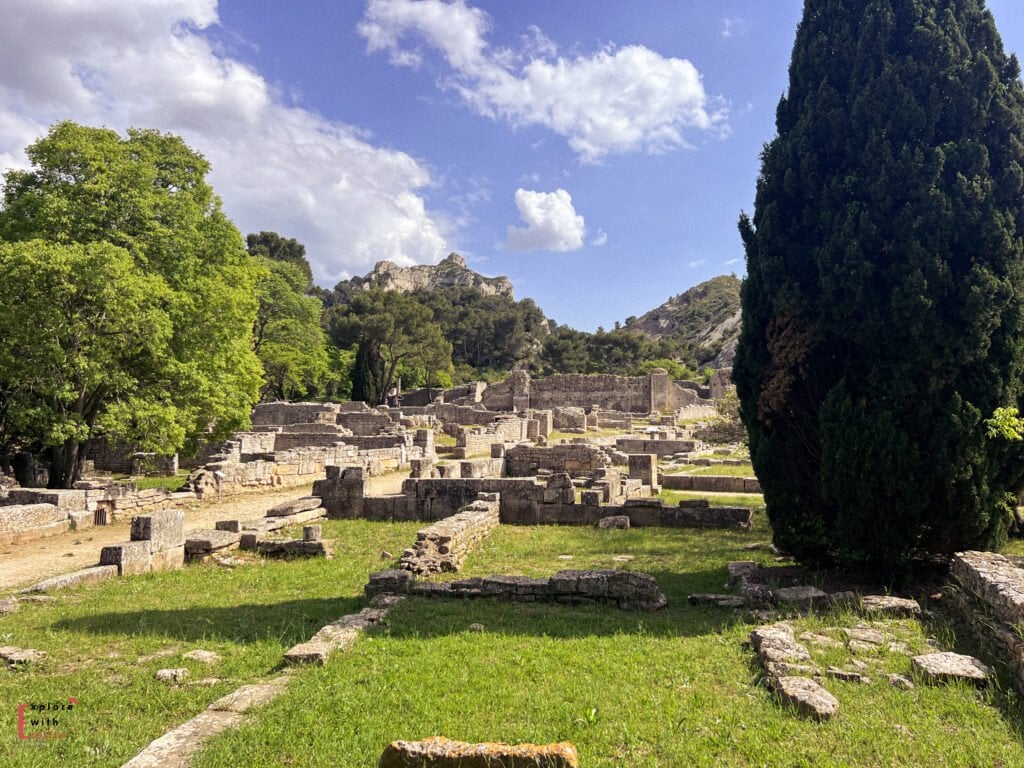
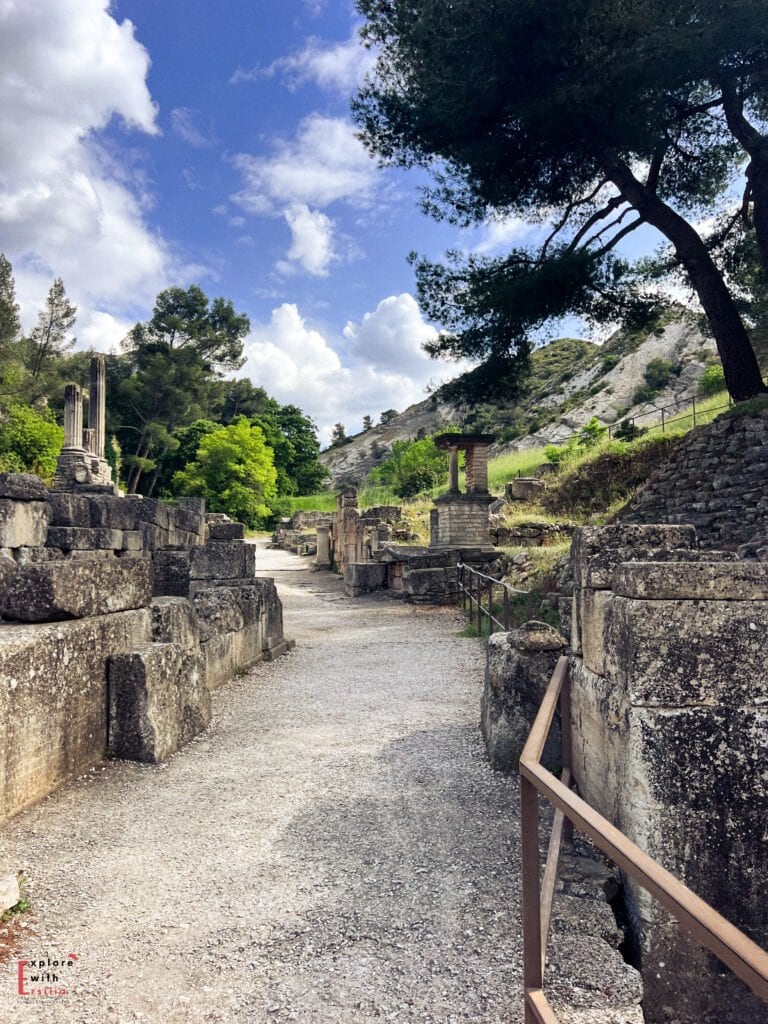
Saint-Rémy-de-Provence it’s mostly know for the picturesque streets and its typical provençal vibe. But this is also the place where Romans built an entire city around sacred springs that locals had been using for centuries.
What gets me about Glanum (the roman site itself it’s called Glanum) is how intimate it feels. You’re not looking at ruins from behind barriers – you’re walking through actual Roman neighborhoods, past their temples, through their bath houses. If you visited the Roman Forum in Rome, this feels somewhat like that but in miniature. The atmosphere is incredible, especially early morning when the light hits those honey-colored stones. The views are beautiful, as the site was built within a valley.
I chose to take the audioguide and it was worth every euro. Instead of just seeing old stones, you hear stories about Roman religious ceremonies, daily life, and the fascinating mix of Celtic, Greek, and Roman cultures that made this place special.
The triumphal arch everyone misses
Right by the parking lot stands this incredibly detailed triumphal arch. Most people glance at it and head straight for the main site. Don’t make that mistake! The carved details are so intricate you can still make out faces, battle scenes, and decorative elements after 2,000 years.
Practical Info:
- Hours: April–September: 9:30 AM–6:00 PM; October–March: 10:00 AM–5:00 PM (Closed Mondays)
- Admission: €9 (Free for EU residents under 26), buy your tickets here or if you plan to visit Avignon and its Palace, it’s cheaper to buy both tickets together
- Insider Tip: Arrive early to enjoy soft morning light and avoid afternoon heat
- Parking: €4 for the day, but you’re only 15 minutes from Saint-Rémy center (if you plan to visit it, I’d elt the car here for the day actually)
Midday: Vaison-la-Romaine – The Roman City That Never Left
This place blew my mind. We’re talking about one of the largest archaeological sites in France.
There are two main Roman neighborhoods to explore (Puymin and La Villasse), and wandering through them feels surreal. You’ll see house foundations with original mosaics still intact, ancient streets with wheel ruts from Roman carts, and a theater that still hosts performances today.
Outside of the site itself, you’ll see (for free and also ouf of necessity to pass the river) the old bridge. This Roman bridge is still in use – like, cars drive across it daily. How incredible is that? A 2,000-year-old piece of infrastructure still doing its job. I figured out what it was only when I was already standing on it!
How to make the best of it
Have lunch first in the medieval upper town. The views over the valley are stunning, and you’ll need the energy for all that Roman neighborhood wandering. Plus, the contrast between medieval architecture and ancient ruins is pretty spectacular.
The small museum is packed with finds from the site – mosaics, sculptures, everyday objects that make you realize these were real people with real lives. Not just “ancient Romans” but neighbors arguing over property lines and kids playing in the streets.
Practical Info:
- Hours: April–September: 9:30 AM–6:00 PM; October–March: 10:00 AM–5:00 PM (Closed January 5–February 9, 2026)
- Admission: €9 for adults, €4 for 10-17 years olds, free for under 9 years olds.
- Insider Tip: The medieval old town is free and absolutely gorgeous
- Parking: free parking
- Footwear: Comfortable walking shoes are non-negotiable – cobblestones everywhere
Afternoon: Théâtre Antique d’Orange – Roman Entertainment at Its Peak
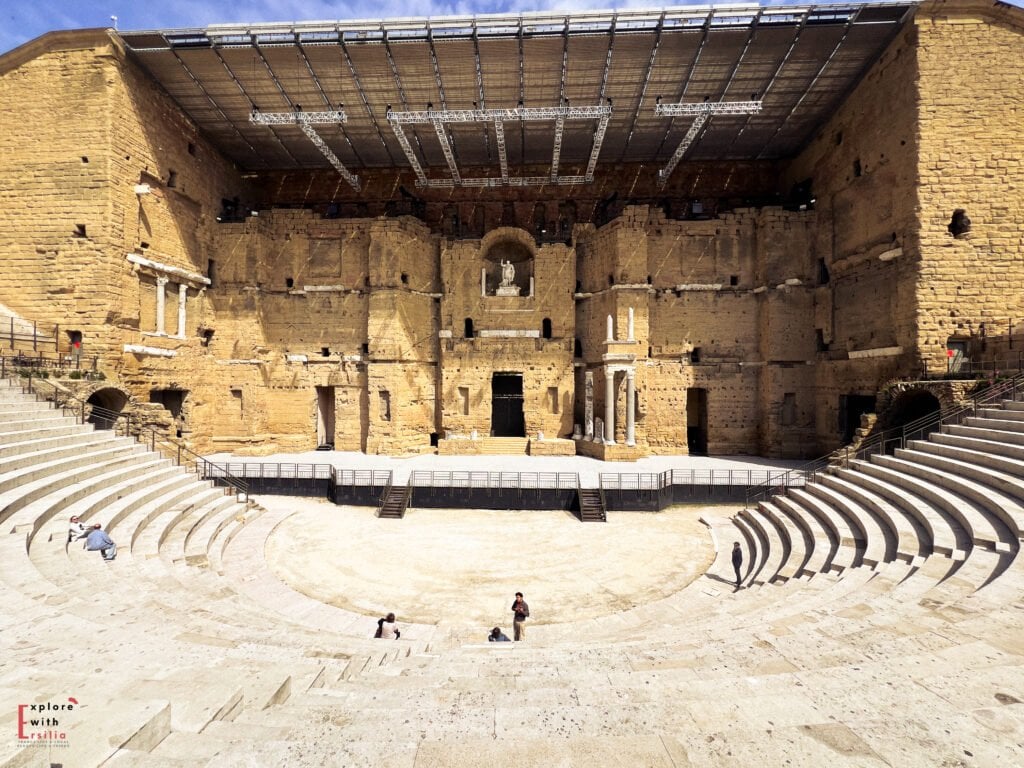
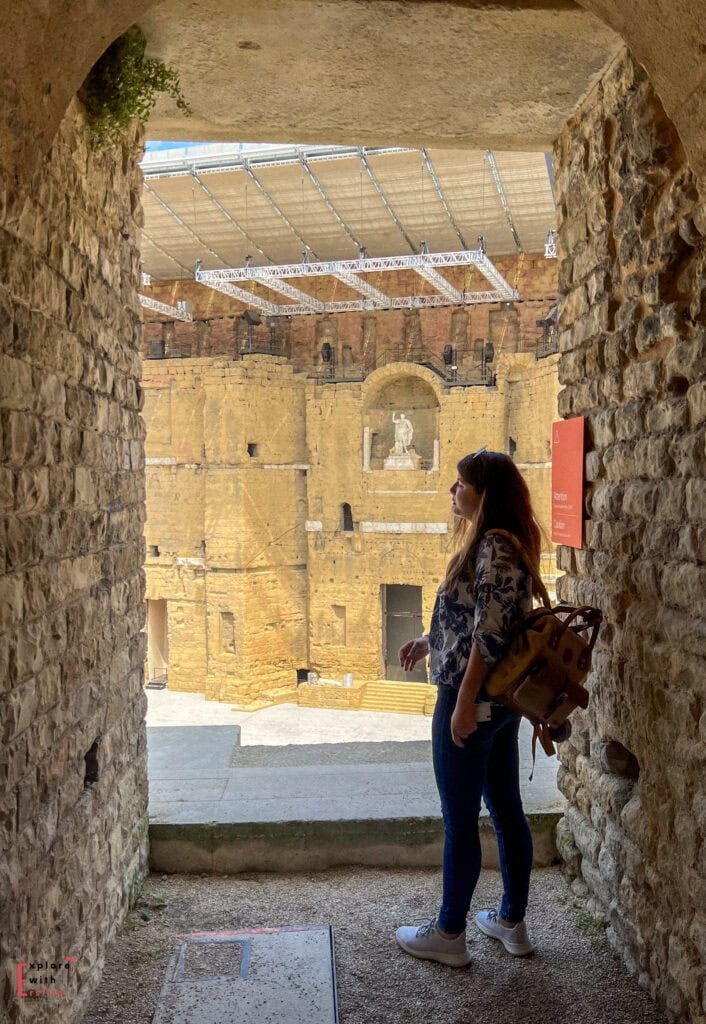
Okay, I need to be honest here. I’ve been to the Colosseum in Rome, and that was always my gold standard for “impressive Roman architecture.” Orange’s theater completely changed my perspective.
The preservation is unreal. You can still hear every single word spoken on stage from the very top rows. The acoustics work perfectly after nearly 2,000 years! And that massive stage wall – it just towers over you in a way that makes you understand why Romans were so good at impressing people.
They still put on shows here, which feels like the most authentic way to experience what this place was actually built for. Sitting in seats where Romans once watched gladiator fights and theatrical performances… it gives you actual goosebumps.
The VR experience nobody talks about
For an extra €5, there’s this VR experience at the entrance. It’s technically designed for kids – follows this girl who travels back in time to see the theater in its full glory. But honestly? I’m definitely not a kid and I loved every minute of it. Sometimes the “educational” approach actually works better than trying to be sophisticated.
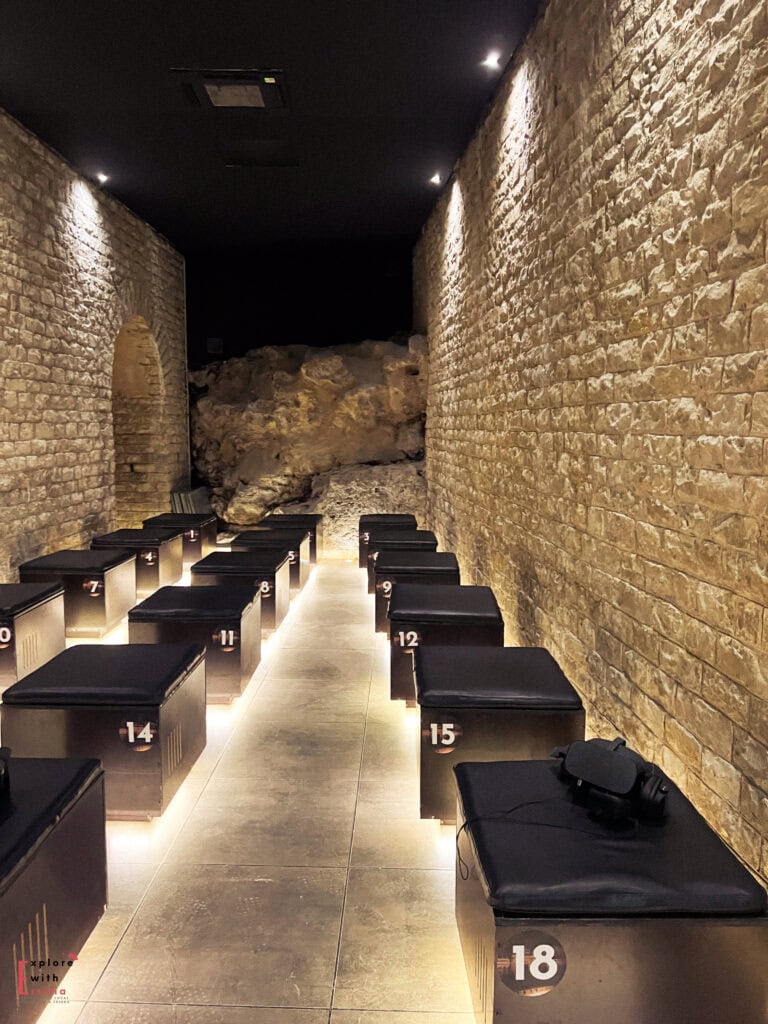
The view from the top
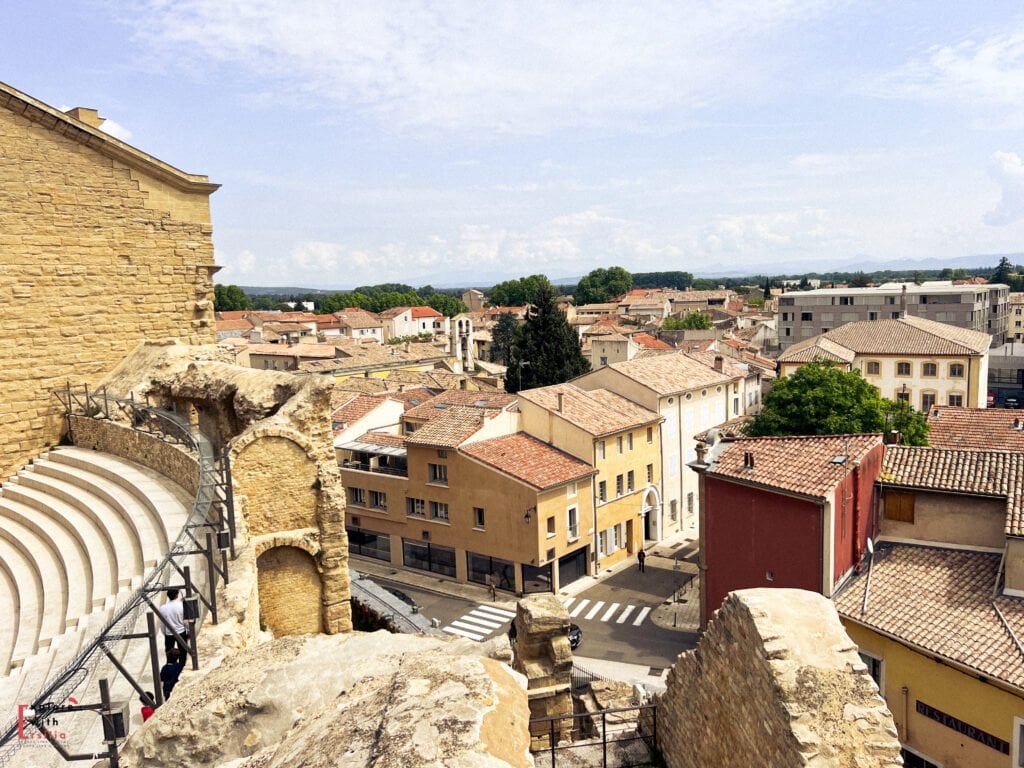
Don’t skip climbing to the highest seats. The panoramic view over Orange and the surrounding Provençal countryside is absolutely breathtaking, especially in that golden late afternoon light.
Practical Info:
- Hours: 9:00 AM–7:00 PM
- Admission: €13 for adults, €5 for the VR show – tickets include the museum on the other side of the road
- Insider Tip: Check out if there are any shows taking place on your dates! Is an incredible way to see the theatre alive!
- Parking: you pay by hour, we managed to park here (google maps link)
Bonus: The Roman Engineering Marvel That Deserves Its Own Day
Le Pont du Gard, When a Bridge Becomes a Destination
I almost forgot to mention this one, and honestly? That would’ve been a crime. The Pont du Gard isn’t just another Roman site – it’s a UNESCO World Heritage masterpiece that can easily fill an entire day.
This is more than a typical archaeological visit where you’re looking at foundation stones. You’re standing beneath a three-tier Roman aqueduct that’s still mind-blowingly impressive after 2,000 years. The scale is just incredible – it’s 49 meters high and spans the entire Gardon River valley.
What makes the Pont du Gard special: This is Roman engineering at its absolute peak. They built this massive structure to carry water across the valley, and the precision is insane. The gradient is so perfectly calculated that water flowed for kilometers with just the right amount of slope.
The full experience: You can walk across the bridge itself, explore the excellent museum that explains how they built this thing, kayak in the river below for a unique perspective, or just have a picnic on the grounds. There are several restaurants and cafés with terraces overlooking the bridge.
The hiking options: Short trails take you up to see the top level where the water actually flowed – it’s fascinating to see the original Roman stonework up close. If you’re feeling more adventurous, longer hikes through the surrounding countryside give you spectacular views of the bridge from different angles.
Important booking tip: We tried to get a guided tour on-site and they were completely sold out. If you want the guided experience, definitely book in advance online. The tours are really good – they explain the construction techniques and engineering challenges in detail.
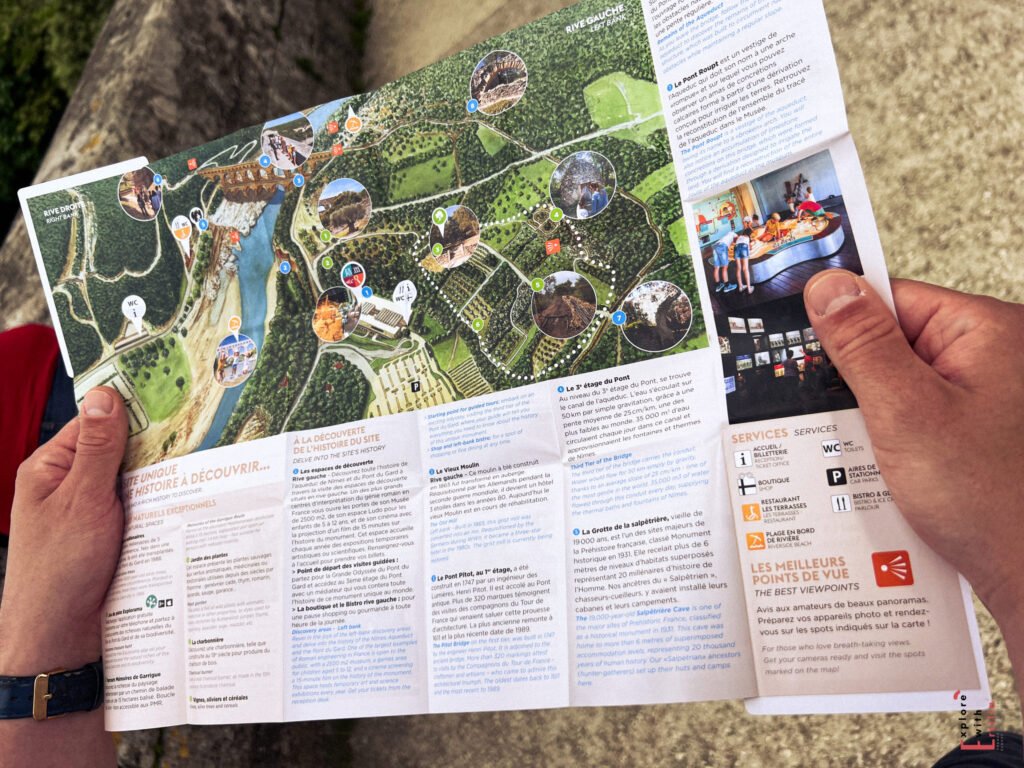
There are multiple ways to experience the Pont du Gard, depending on your interests and how much time you have.
You can book a general entry ticket that gives you access to the museum, temporary exhibitions, a family-friendly play area (Ludo), and a short film about the aqueduct’s history. For a deeper dive, join a guided tour—available in French and English—which includes access to the top of the bridge and the ancient Roman water channel. If you’re visiting with kids or looking for something creative, several hands-on workshops are offered throughout the summer, like making your own Roman mosaic, oil lamp, or linocut print.
There’s even a charming horse-drawn carriage tour available on select mornings. Most experiences include museum access and last between 1 to 2 hours. You can find them all here.
Perfect for: This site works for everyone – history lovers, families, outdoor enthusiasts, photographers. It’s one of those rare places where you can combine cultural education with outdoor activities.
Practical Info:
- Hours: April–September: 9:30 AM–6:00 PM; October–March: 10:00 AM–5:00 PM (Closed January 5–February 9, 2026)
- Admission: €8 for adults (includes both museum and the bridge itself)
- Parking: €9 per day
Making It Work: Your Roman Day Trip Strategy
Three sites in one day is definitely ambitious, but totally doable if you plan it right. I managed two comfortably and could have squeezed in the third if I’d started earlier and been more strategic.
Option 1 – The Three-Site Challenge
- Start at Glanum (9 AM opening) – cooler temperatures, fewer crowds, beautiful morning light
- Lunch in Vaison-la-Romaine – medieval upper town has incredible views and good restaurants
- Afternoon at Orange – perfect lighting for photos and the most impressive site to end on
Option 2 – Pont du Gard Full Day
Dedicate an entire day to the Pont du Gard – combine the historical visit with kayaking, hiking, and a long lunch overlooking the bridge.
It’s the perfect mix of culture and outdoor relaxation.
The distances work in your favor: Everything’s within about an hour’s drive of each other, so you’re not spending all day in the car.
Where to base yourself: Saint-Rémy-de-Provence is perfect – charming town, excellent restaurants, and you’re literally next to Glanum. Plus, the hotel options are fantastic.
Why This Matters More Than Just “Old Stuff”
Look, I get it. Not everyone gets excited about ancient ruins. But there’s something about these places that goes way beyond just being historically significant.
Standing in that Roman theater in Orange, watching the late afternoon sun hit those ancient stones while knowing that people sat in these exact seats 2,000 years ago… it connects you to something bigger than yourself. These romans who lived here, they were people who worried about their kids, fell in love, argued about politics, and built things that lasted millennia.
Each site tells a different part of the story.
Glanum shows you the sacred and the everyday – temples next to bath houses, spiritual spaces mixed with practical Roman engineering.
Vaison-la-Romaine lets you walk through actual neighborhoods where families lived and worked.
Orange demonstrates the incredible scale of Roman entertainment and their genius for creating experiences that still work today.
The real secret? Don’t rush. These places reveal themselves slowly. Sit in the Roman theater seats for a few minutes. Walk the ancient streets at Vaison more than once. Let your imagination fill in the gaps between the stones.
That’s when the real magic happens – when you stop seeing ruins and start seeing the lives that created them.
Practical Tips That Actually Matter
Timing your visit: Summer means longer hours and better weather, but way more crowds. Spring and fall offer the perfect balance – comfortable temperatures, beautiful light, and fewer bus tours.
What to bring: Comfortable walking shoes (seriously, the cobblestones are no joke), sun protection, and a good camera. The photo opportunities are incredible.
Budget reality: Entry fees add up (€8 + €9 + €12 = €29 per person), but these sites are genuinely special. If you’re on a tight budget, prioritize Orange – it’s the most impressive single site.
Language barriers: All sites have English information and audioguides. The French tourist infrastructure is excellent, so don’t let language concerns stop you.
This isn’t just a day trip – it’s a journey through time that’ll change how you think about history, architecture, and what humans can accomplish when they put their minds to it. And honestly? That’s worth way more than the entry fees.
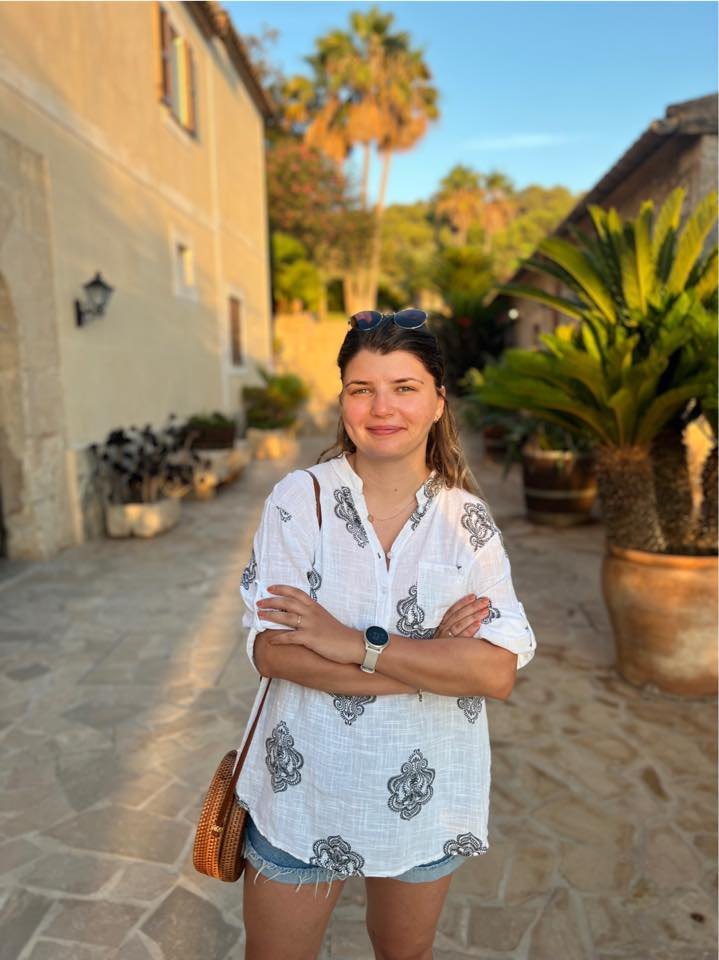
author page / EDITORIAL POLICY PAGE
Hi, I’m Ersilia

Toulouse, France

Originally from Romania

English & French Content
As a Romanian expat living in the heart of southern France, I guide English speakers to discover authentic French experiences without the language barrier. My unique perspective as both a local and an expat allows me to share insider tips, cultural insights, and practical advice that you won’t find in typical guidebooks.
My Expertise:
- French life and culture navigation
- Hidden gems across French regions
- Eastern vs Western European perspectives
- Local insights and practical travel tips
Blog Socials
Personal Pages







